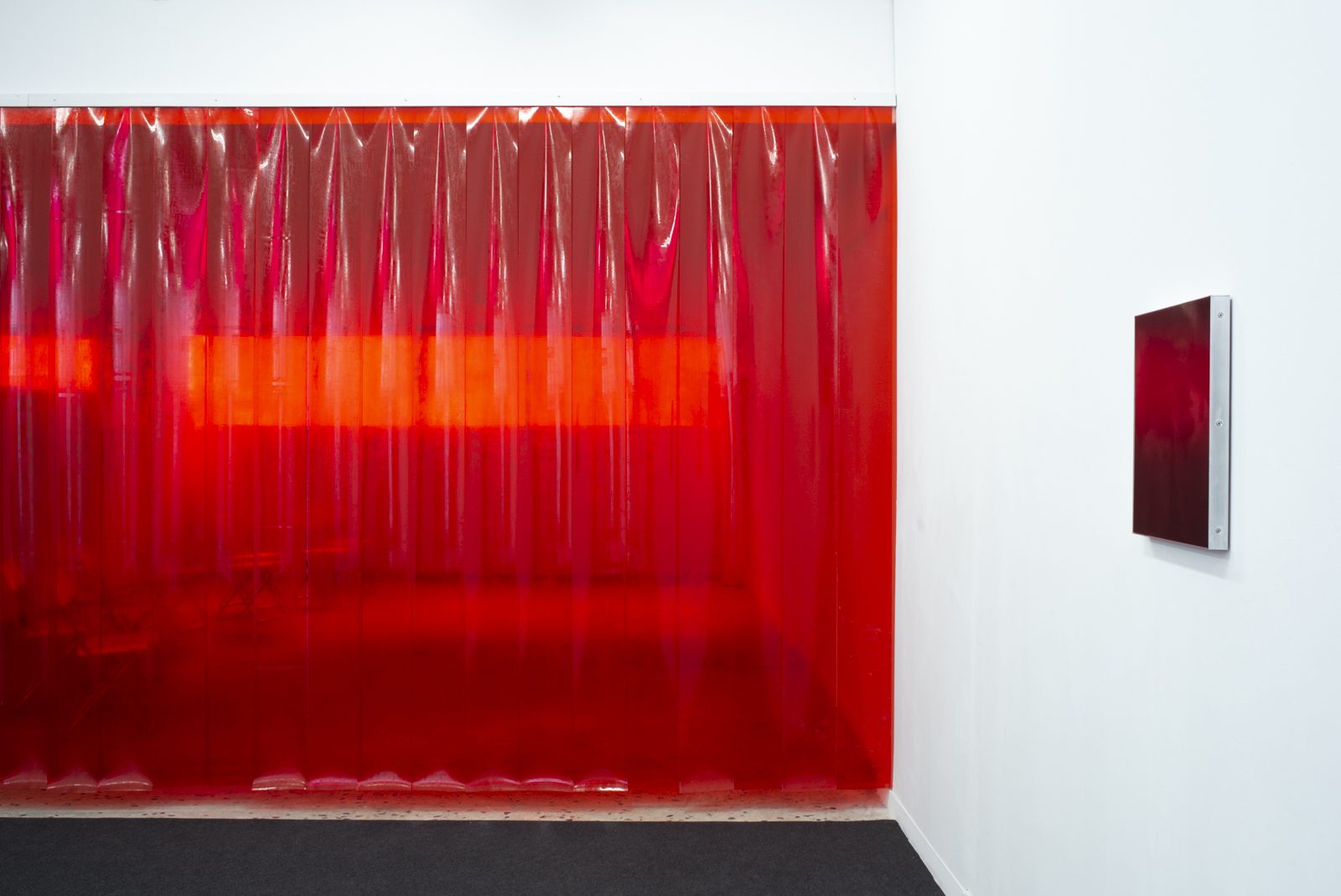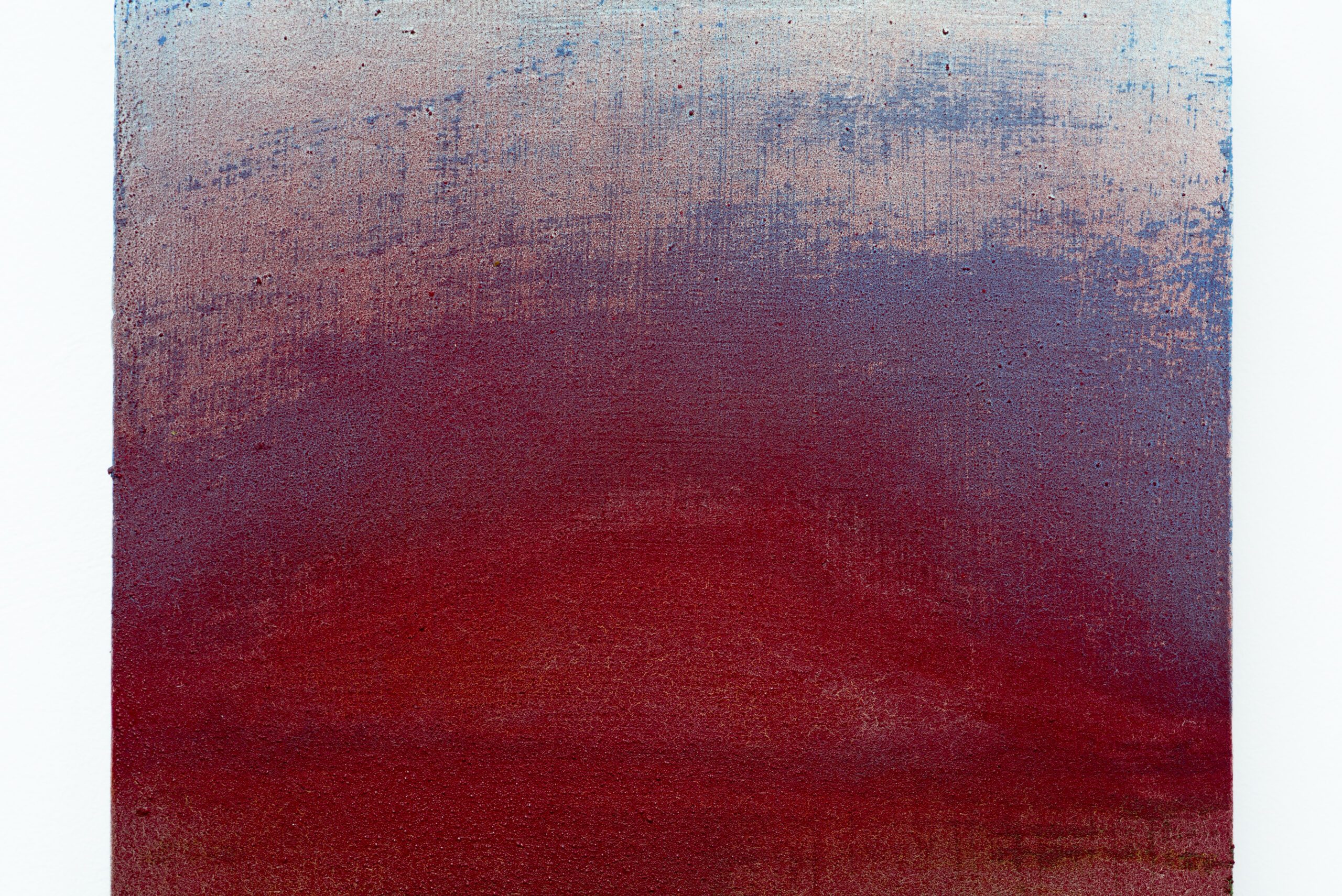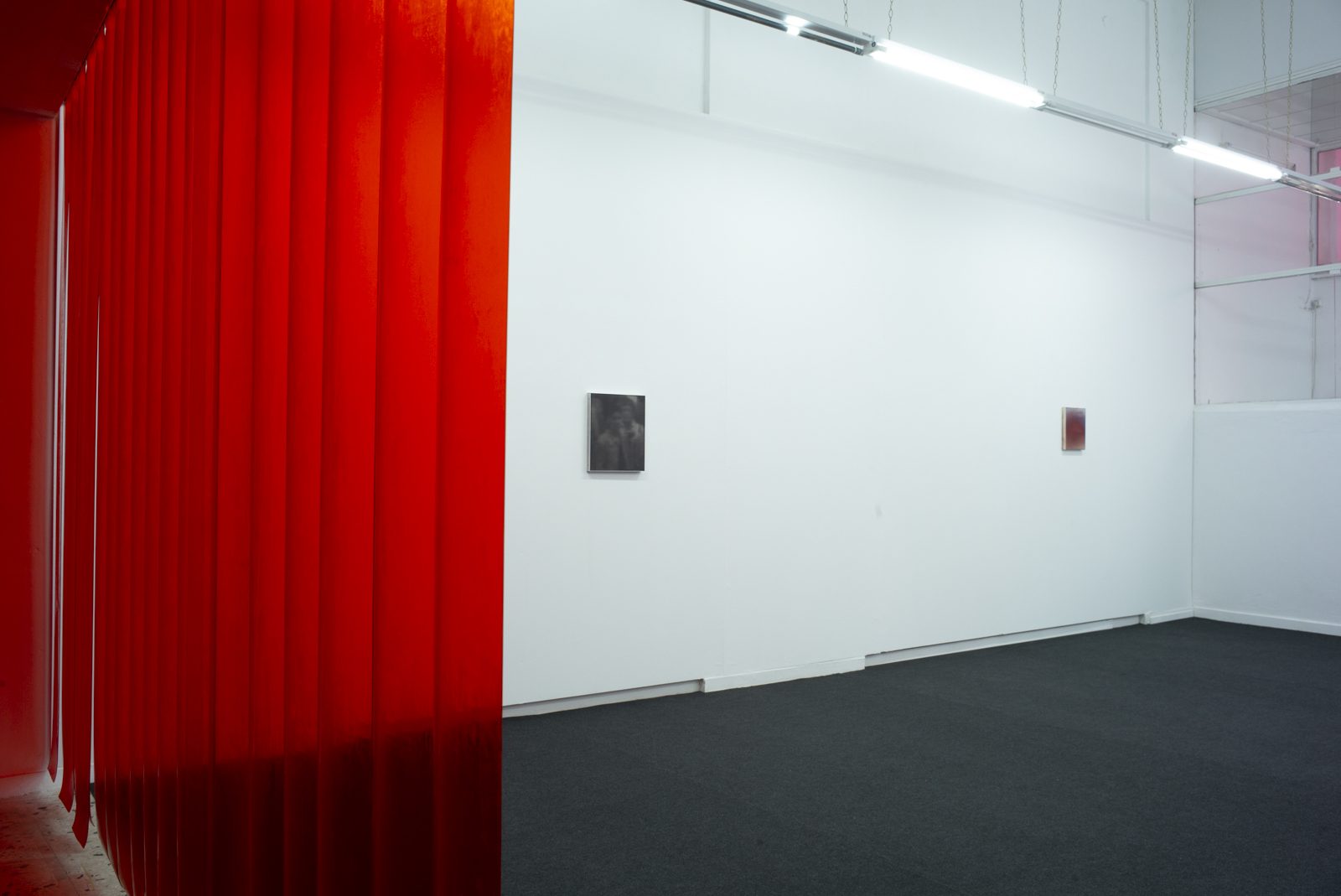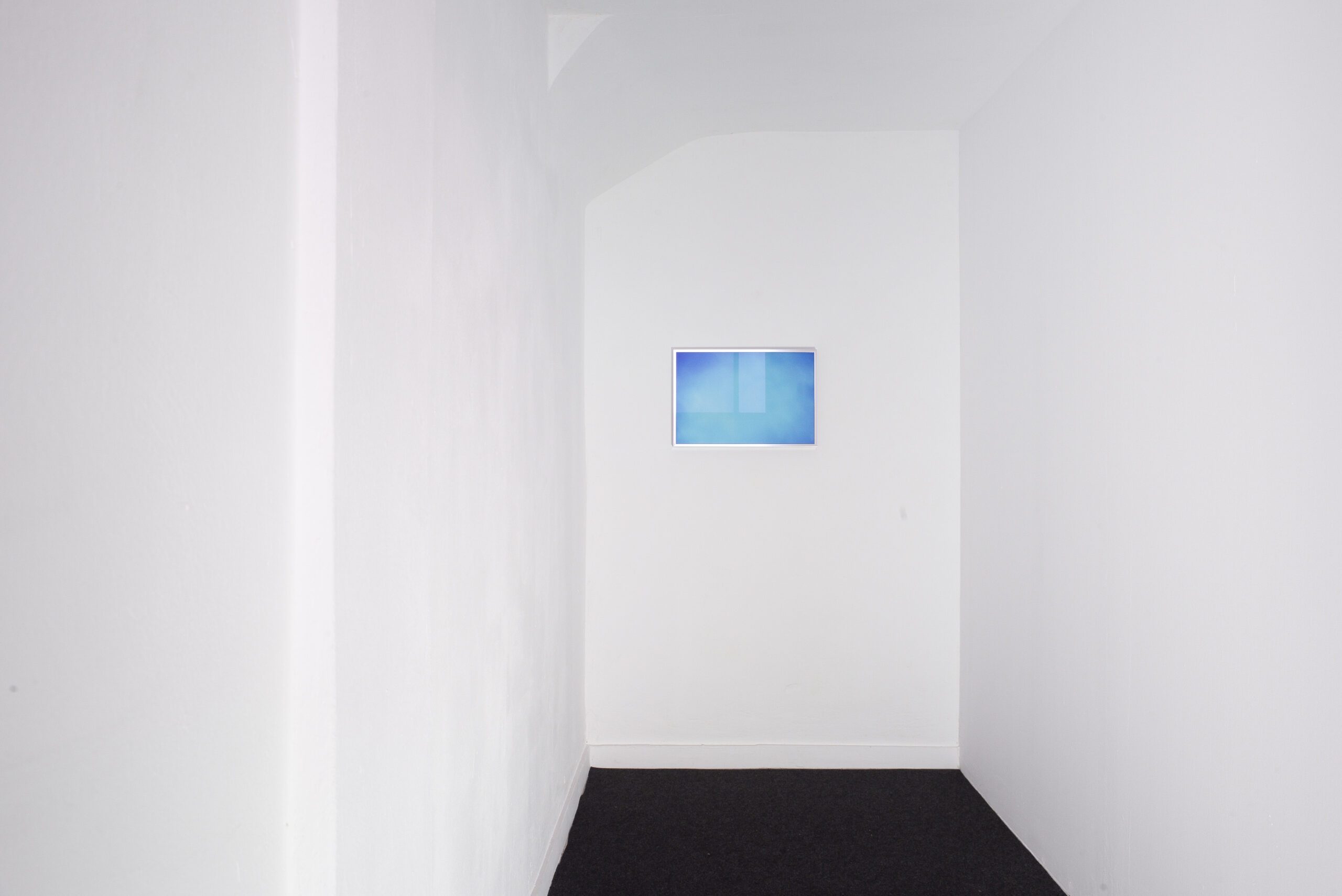Erik Swars: L
Solo Show
“L”
Lambda Lemon Like Love Lucky Landscape Lovers Lost
“A total of 7 works can be seen in the exhibition. At the entrance, the public has to change shoes. To the left of the door is a metal shelf with 8 pairs of shoes. 8 pairs cut and tied from carpet. Carpet on carpet. The maximum number of people in the room is thus limited to 8. On the wall to the left, the neon work Untitled (le citron) shines in cool white. Lemon, citron, Manet. Japanese plate. The street shoes on the shelf. Four stones on the floor demand to cross an artificial water surface in a performative act. It is impossible to cross the water from both sides at the same time. They have to communicate and come to an agreement. From this point on, many things happen simultaneously. You are standing on carpet again, carpet on carpet. On the left, bright light, the only and therefore almost glaring light in the entire room. Two works on the wall to the right. About 4 meters apart. The one on the right is a painting. Title: Untitled (Circles/2). Landscape, sunset, oil, paint on canvas. On the left a screen print on aluminum. A couple, two people. Black on aluminum. Title: Untitled (Couples/2). If you turn around, you stand in front of the work Untitled (KRFZ). What you see is a cable laid across a socket. The socket is unreachably high up, the cable is not plugged in. The cable hangs on the last balanced centimeter of the socket, hanging down to the floor. Three works remain. Two videos, one photograph. Behind the red curtain, Untitled (pieces) takes up an entire room. The 16-minute work gives the entire exhibition a background noise. It is the beginning and the end. Red is the dominant color. Strobo. Two people in a landscape. Red is also the color of the windows. Beginning and end. Two remain. If you move back towards the water, you can see the work Untitled (ile de coeur) on the left. A 6 minute long video work. You can see a cropped fox in a meadow. Green strobe, green noise. The bright light continues to shine from a small room on the right. A narrow corridor leaves you alone, isolates you from the rest of the exhibition. Everything disappears. The photograph Untitled (part of a sky) shows, as the title suggests, a section of a sky. The shiny frame reflects the room. The non-reflective glass, on the other hand, allows a view without reflecting the surroundings. If you go back five steps, you find yourself in the middle of the exhibition. There is the sky on the left, the cable above the socket, the red noise, two people, the sun, an animal and behind you the right angle on the wall – the L that can also be lemon.”
Erik Swars
curated by Frank Holbein and Nadja Geer:
7 works, limited to 8
Erik Swars “L”
(Lambda Lemon Like Love Lucky Landscape Lovers Lost)
It is not surprising that a work by Erik Swars hangs next to one by Imi Knoebel in Ken Nakahashi’s gallery in Tokyo – there is something in the aesthetics of Swars, born 1988, that connects to the group around Knoebel, Rainer Giese, and Blinky Palermo, namely Swars’ purism and experimentalism. The minimal art of the late 60s and early 70s shaped a specific spirit of change, together with conceptualism, fluxus, activism. All these sprang from what Gerhard Richter called “capitalist realism” – respectively the pop-savvy rejection of it. Red is the color of love and red is also the exhibition space after Erik Swars has moved in, not shying away from the popular as well.
Behind a red curtain in the back space of One Minute Space “Ohne Titel (pieces), a 16 minutes long work, shows two people in a landscape. The soundtrack is industrial, the disruption of the filmic flow by red is emphasized by stroboscopic light; the moment of togetherness is crossed by interferences. The flatness. of the red square counter the deep nostalgia of the slow motion.
The distinction between surface and depth gave rise to a spatial model that took on the status of an epistemological metaphor and structured various areas of knowledge. The work of Erik Swars ignores consciously this distinction which gave way to the semantic gap between high and low. “L” interferes with the exhibition space intensely, using both – surface and depth – as contemporary aesthetics: video, painting, a neon work, a screen print on aluminium, a sculpture, photography, the space itself: “L” is a parkour the visitor is asked to traverse: 7 works, limited to 8.
Erik Swars refers to art history, perspective, and the representation of space in a performative and situational way. Victor Burgin describes Situational Aesthetics as a kind of aesthetics where the form gets rather determined by the message not by the materials; therefore the concrete forms are intentionally only partly located in the real exterior space but partly also in the psychological, interior space. Burgin developed this theory alongside his own photography – and the question how YOU look at it might be still one of the the crucial aesthetic question in contemporary photography.
An unbiased, new form of seeing that arises from the work but also from its surroundings, the way it is set. László Moholy-Nagy recognized in fact seeing as the basic condition for the realization of space: sight and the constellation of bodies in relation to each other and not alone: “Man first becomes aware of space – the positional relationship of bodies – through his sense of sight”. [1] Sight and space are connected and mutually dependent. Movement adds up to this experience, “L” is inherently transitory. Beginning and end are simultaneously present, as the artist writes in his descriptive directory, which can be seen as a part of the exhibition on equal footing with the water basin you have to cross in the entrance area: It is easy to image somebody reading out this text loud like a stage direction. The lightning storm of the past – a faint memory of a lucky time gone by – is just as present as the stream from an imaginary fluid landscape in which communication becomes the supporting element – do you go first or should I?
Nadja Geer
[1] László Moholy-Nagy, Von Material zu Architektur 1929, Faksimile-Nachdruck, Mainz, 1968, p. 195.
exhibition production: Nikos Katsampanis
social media: Cristina Koutsolioutsou
Opening: 6/4/2024
6/4/2024-5/5/2024
After-Party im Basement
Bar: Alphaville
DJ: Spencer Clark
———————————————————————-
Erik Swars (*1988 in Zwenkau, DE)
Swars studied for two years at the Hochschule für Grafik und Buchkunst Leipzig, five years at the Burg Giebichenstein Kunsthochschule Halle, and one year at the Geidai University of the Arts in Tokyo.He is represented in various private and public collections. Selected exhibitons :2018 you and me are the same thing Galerie Kleindienst /2019 bis hierhin gings noch gut with Ronny Szillo and Stefan Vogel /2020 Museum der bildenden Künste Leipzig (solo) /2021 21 Museum der bildenden Künste Leipzig (solo) /2021 hey you / I try to love you just as you are with Carsten Tabel /2021 Moments and/or Realities between Jochen Hempel (solo) /2021 Sammlung des Bundes Art Collection of Germany /2022 present collective Werkschau Spinnerei Leipzig (group) /2022 New Positions Scholarship Art Cologne /2022 IMI AND ERIK Ken Nakahashi with Imi Knoebel /2023 teile 20-23 Studio (solo) /2023 started closed circles (1/24) (global) /2023 skésis SunnyBrook Art Center.



